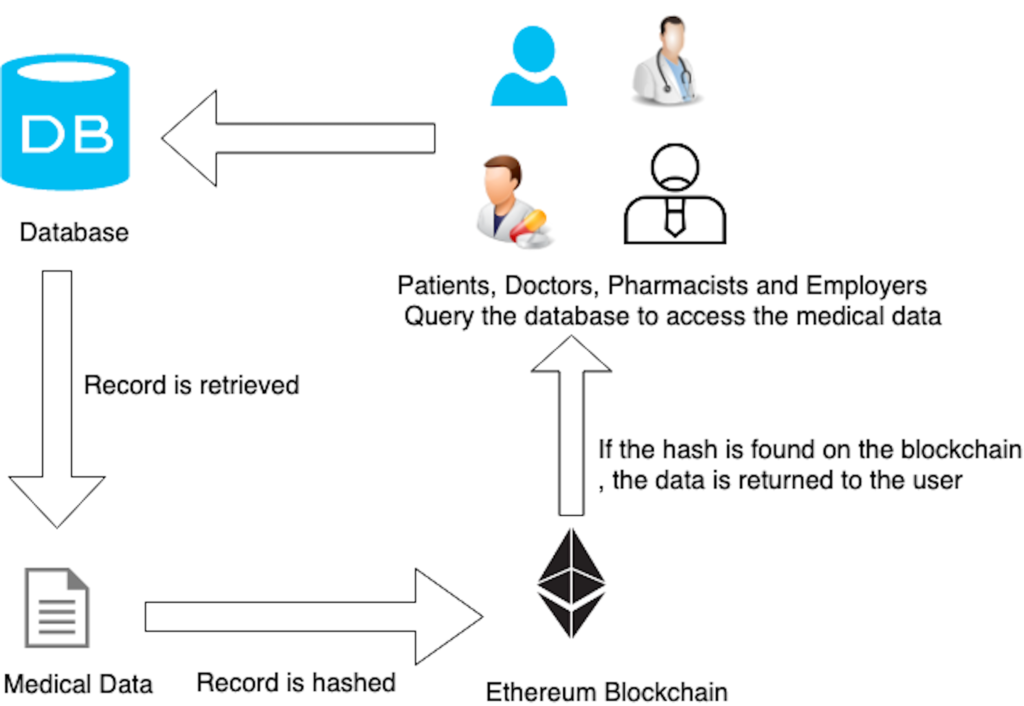The introduction of Bitcoin in 2008 gave birth to Distributed Ledger Technology (DLT). A blockchain is essentially a distributed, immutable digital ledger which uses cryptographic algorithms to securely store transactions of any type. The blockchain network consists of a number of ‘nodes’ which are used to confirm transactions and secure the network in order to ensure immutability. Anyone with internet access can join the blockchain network and view the transactions on the ledger. This technology set in motion a new era, where applications are decentralised with no central authority.
This work proposes the use of the Ethereum blockchain to try and reduce, or even eliminate, medical sick certificate and prescription abuse. The Centre for Disease Control (CDC) reports that prescription drug abuse is the fastest growing drug problem in the United States, with tens of thousands unintentional drug overdose deaths annually [1]. Medical sick leave certificates and drug prescriptions are digitally signed by the private key of the doctor and the patient and stored on the blockchain. Other
stakeholders, such as employers and pharmacists, can access the relative data provided they have the required permissions. Data analytics for the health authority, in the form of calendar heatmaps and map markers, have also been implemented. A hybrid architecture is used in order to save on the cost of using the blockchain. Hashed pointers are stored on the blockchain while the actual data resides on a database. The sick leave certificate and prescription life cycle are fully tracked, meaning that prescription data is recorded from when the prescription is issued by the doctor until it is dispensed by the pharmacist. The sick certificate life cycle is fully monitored from when the certificate is created to when it is forwarded to the employer and, eventually, the health authority. The proposed system was finally given to the interviewed stakeholders for a trial to conduct a usability study as well as gather feedback regarding the system’s ability to reduce abuse. The feedback given by the stakeholders was positive overall, and indicated that this system may actually reduce medical sick certificate and prescription abuse.


References
[1] Centers for Disease Control and Prevntion (CDC et Al.), “CDC grand rounds: prescription drug overdoses-a US epidemic.,” MMWR. Morb. Mortal. Wkly. Rep., vol. 61, no. 1, p. 10, 2012.
Student: Luke Attard
Supervisor: Dr Conrad Attard
Co-Supervisor: Dr John Abela
Course: B.Sc. IT (Hons.) Software Development
